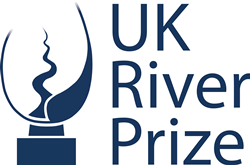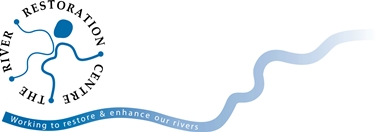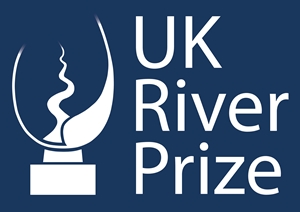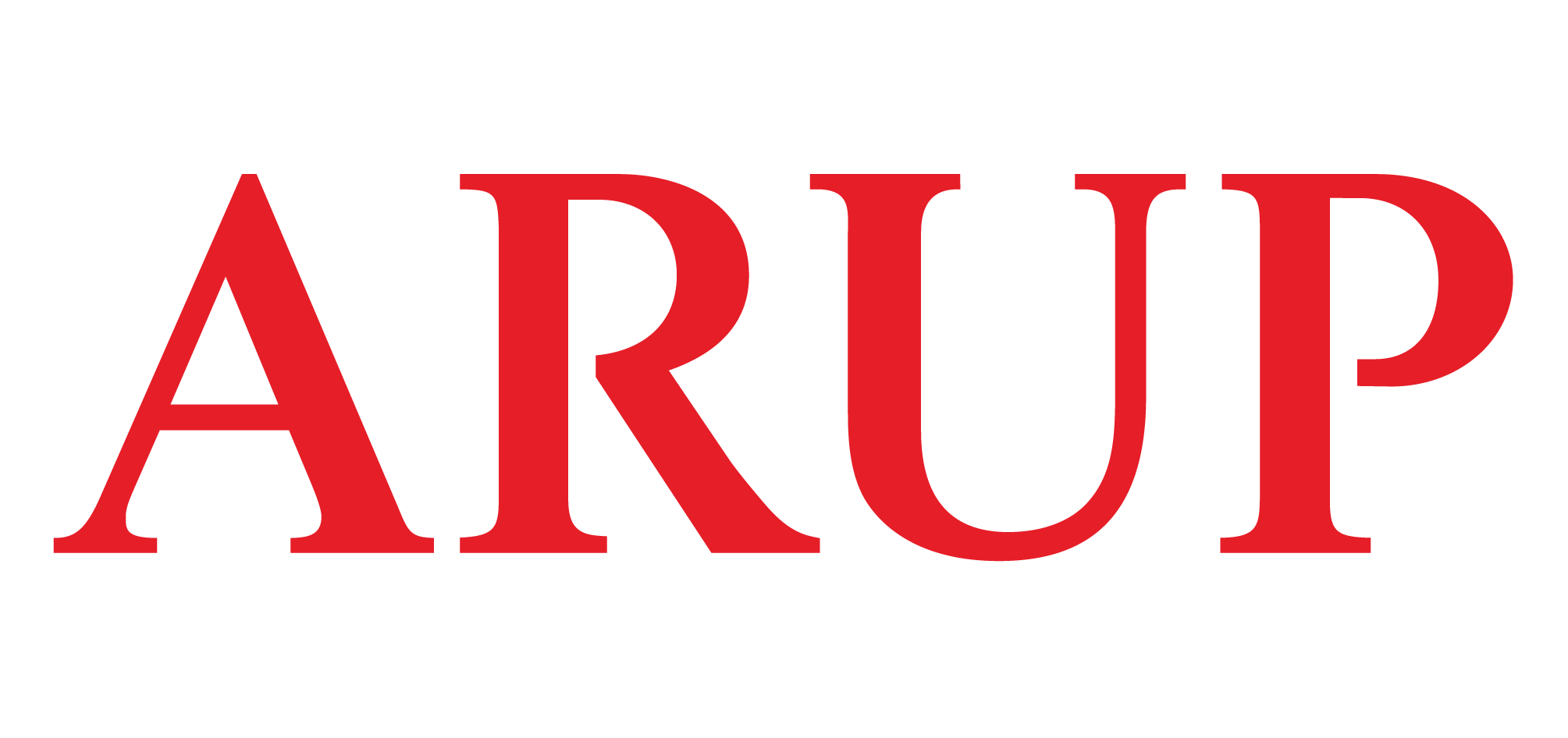UK River Prize > 2024 UK River Prize
 |
2024 UK River Prize Winners announced Read the Press Release |
| UK River Prize | |
|
The UK River Prize celebrates the achievements of those individuals and organisations working to improve the natural functioning and ecological integrity of our rivers and catchments, and recognises the global benefits to society of a healthy natural environment. It is a collaboration across England, Wales, Scotland and Northern Ireland to celebrate best practice across the four countries. The UK River Prize is awarded by the River Restoration Centre (RRC). It is judged by a panel of UK experts. The UK River Prize winners will be announced on 24th April 2024 at the UK River Prize Awards Dinner, in association with the RRC Annual Network Conference in Llandudno, North Wales. |
|
| 2024 Partners | |||
 |
 |
|
|
| 2024 UK River Prize Winners | |||
| River Rom, Greater London, England - 'Rewilding the Rom' Winner 'project-scale award' |
|||
|
Lead: Thames21 Partners: London Barking & Dagenham Council, Environment Agency, Essex & Suffolk Water, Havering Council, Havering Wildlife Project, Kusuma Trust UK, Roding, Beam & Ingrebourne Catchment Partnership, Mayor of London, Thames Chase Trust, Fondazione Edmund Mach, cbec |
|||
|
The River Rom, south of Roneo Corner, is heavily degraded. Straightening has resulted in the river losing much of the natural flow and habitat diversity that is needed to support rich biodiversity. It has also resulted in the loss of much of the river’s connectivity to its floodplain. This means the Rom lacks many of the associated wetland habitats that would slow the speed of destructive floodwaters and support the area's biodiversity. The Rewilding the Rom project presented a rare opportunity to restore natural functioning to an urban river in London and in doing so, increase the rivers resilience to the compounding effects of climate change. Project aims are broadly fourfold; providing both offline and online flood storage, increasing resilience of downstream communities; diversifying the Chase Local Nature Reserves (LNR) habitat to support biodiversity; improving water quality of the Rom; and connecting communities to their river and environment. By providing these multiple benefits, this project demonstrates measures to address the biodiversity crisis are often closely intertwined with improving local communities' resilience to climate change. |
 |
||
|
In 2021, Land of the Fanns Partnership Scheme funding facilitated the excavation of two seasonal wetlands (scrapes) on the Havering Side of the River Rom, in Grenfell Park to protect flood-prone properties downstream of the site. While the primary purpose of the scrapes is flood protection, they also provide habitats for flora and fauna. Flood modelling has been completed, showing that the scrapes, along with the other interventions, contribute to a reduction in flood risk to several downstream properties and the locally important Maylands Health Centre which currently serves 10% of Havering’s population. Subsequently, eleven large wood deflectors have been installed in the River Rom, and a tributary has been realigned with the goal of diversifying the flow within the channel. By restoring sedimentary processes, different habitats are created to support fish spawning, invertebrates and other riverine species. Visual inspections of the deflectors indicate that they are generating new erosional and depositional features. In 2022, Thames21 began work on the opposite bank at the Chase LNR. These works involved breaching a large flood embankment in three locations, behind which three interconnected wetland scrapes have been excavated. In high flows, the river now floods into this newly connected area of floodplain, creating an area of species-rich seasonal wetland. BEPERP, who are monitoring the Rom as part of their project, have found improvements in biological indicators already. |
|||
| Ullswater, Cumbria, England - 'Ullswater Catchment Restoration' Winner 'catchment-scale award' |
|||
| Lead: National Trust Partners: Ullswater Catchment Management Community Interest Company, Environment Agency, Natural England |
|
Ullswater is one of the most iconic destinations in the Lake District, attracting millions of visitors every year and home to thriving rural communities. However, decades of agricultural intensification and land use change have resulted in highly modified rivers and declining biodiversity. The Ullswater catchment restoration project seeks to reverse this decline in habitat and natural processes through working with landowners and local communities to foster change at a catchment scale. |
 |
|
In response the Ullswater catchment Partnership has been working to deliver management initiatives and physical interventions for 10years. The partners have delivered 282 projects, including over 13km of river restoration, 46ha of water storage, 12km of hedgerow creation, 497ha of wood pasture restoration and 249ha of peat and wetland restoration. A key large-scale achievement has been the river and valley bottom naturalisation work which stretches from the bottom of Kirkstone Pass to Ullswater and includes large areas of the Brothers Water SSSI and the River Eden and tributaries SSSI.
The project outputs are monitored through several approaches including repeat freshwater and terrestrial ecological surveying, soil nutrient, organic matter and carbon sequestration analysis, sediment storage analysis, hydrological monitoring of large interventions, fish surveying and redd counting and citizen science monitoring initiatives. |
| 2024 UK River Prize Finalists |
| Upper Witham, Lincolnshire, England - 'Upper Witham Restoration' | |||
| Lead: Environment Agency Partners: East Mercia Rivers Trust, Wild Trout Trust, National Trust, Grantham Angling Association Fly Fishing Section, South Kesteven District Council, University of Lincoln |
|||
|
The Upper Witham has been subject to significant changes which have modified the river and its hydrological functioning. These legacy interventions have been damaging to habitat and with serious pollution incidents, climate change implications and invasive species threats, native species such as White Clawed Cray-fish and Brown Trout are at risk of local extinction. A ground water fed system has now also become far more reactive in response to an increase in storm intensity across the area. Habitat improvement, rejuvenating a self-regulating functional active river system has been an aspiration for stakeholders working in the catchment for some time. Initial attempts at improving in-channel habitat from 2013 (EA, WTT and GAAFFs) used hinged trees and berms to narrow the river and scour pools. In the lower reaches, downstream of Grantham, this provided habitat in a system where it had previously been removed and was a good addition. Reviews of work did however indicate that this approach was not always having the desired effect; linked to very resistant clay bed and banks, poor gravel supply, and a lack of floodplain connectivity. |
 |
||
|
Lessons were learned and subsequent landowner and flood risk engagement took place. These were applied in the EA and NT’s Belton project which began in 2016 with imported gravels added at the time. This worked well and provided a blueprint for works in the nearby urban setting of Wyndham Park, Grantham (EA and SKDC in 2017). More urban projects in the town followed from the Rivers Trusts (Dysart Park 2020) and most notably the Blue Green corridor project led by SKDC with more gravels added, trees hinged, berms created, and wildflower and wetlands introduced widely along the river. Belton was revisited in 2023 where floodplain connectivity was increased through strategic floodplain lowering and reconnection using live and dead woody material as the driver for change. The scale and ambition of individual projects increased with a more recent focus on larger scale projects connecting rivers with their floodplains more frequently. Manthorpe flood bank removal in 2020 (WTT and EA), Upper Cringle Brook ‘stage 8’ 2022 (EMRT), Grange Farm Stage 0 restoration (EA 2021) and Colsterworth (EMRT 2023) system reactivation, as well as innovative techniques such as smaller size gravel augmentation downstream of weirs (2023, WTT and GAAFFS at Papermill weir). Three large scale weir easement projects have also taken place at Aubourn (2016), Great Ponton (2015) and Easton (2014). |
|||
| Horner & Aller, Somerset, England - 'Riverlands Porlock Vale Streams' | |||
| Lead: National Trust | |||
|
The project at Porlock has been at the forefront of the National Trust’s ambition in relation to the river catchments and its Land, Outdoors and Nature strategy. The project is unique in that it is based on the Holnicote Estate within which the National Trust owns two whole river catchments and a small part of a third. |
 |
||
|
The project has taken a catchment approach and evolved to work with natural process at landscape scale bringing multiple benefits to people and wildlife. Importantly the approach of monitoring change in the catchments has continued with a hydrological data set of some 13 years complimented by ecological, soil, remote sensing and drone monitoring. This allows the project to evidence any change, sharing knowledge, experience and data to other stakeholders. A key part of the project is the Landscape Recovery Scheme on the estate that is in its development phase. The aim of this project is to develop bespoke payments that enable land managers to make space for water, habitat and wildlife. Already well underway the project has engaged all the local tenant farmer community and other major land managers, with clear aims for changes to land management, how this can be financed, and any change monitored. Part of this project includes developing a risk and opportunity mapping exercise for beaver and development of a robust management plan for the species. The Landscape Recovery Scheme is a springboard into the next phase of the project at Holnicote. This next 5-year phase will include continued monitoring so that we can accurately assess change and further nature-based interventions at scale to increase ecosystem function and dynamic catchment habitat. The practical works will include further reintroductions (native crayfish, minnows, stickleback), low tech channel interventions at scale to reconnect water with the surrounding landscape, upland ditch blocking to hold water in upland peat soils, tree planting and natural regeneration, intertidal habitat creation through floodplain reconnection and wild beaver release. |
|||
|
Find out more about the UK River Prize and previous winners >>> |
|||
Media Enquiries
| Joshua Robins |
|
| River Restoration Adviser | |
| The River Restoration Centre | |
| rrc@therrc.co.uk | |
| 01234 752979 |
| | |
| Logo |
|
You may use the UK River Prize Logo appropriately in communications about the UK River Prize and its commended projects, but please check with us before using it in a promotional capacity. The three logos can be used interchangeably depending on your preference. To download, click on a logo to open the large version in a new tab, then right click and save image. |
 |
 |
 |
| White logo | Blue logo | Transparent background |
| Download | Download | Download |



